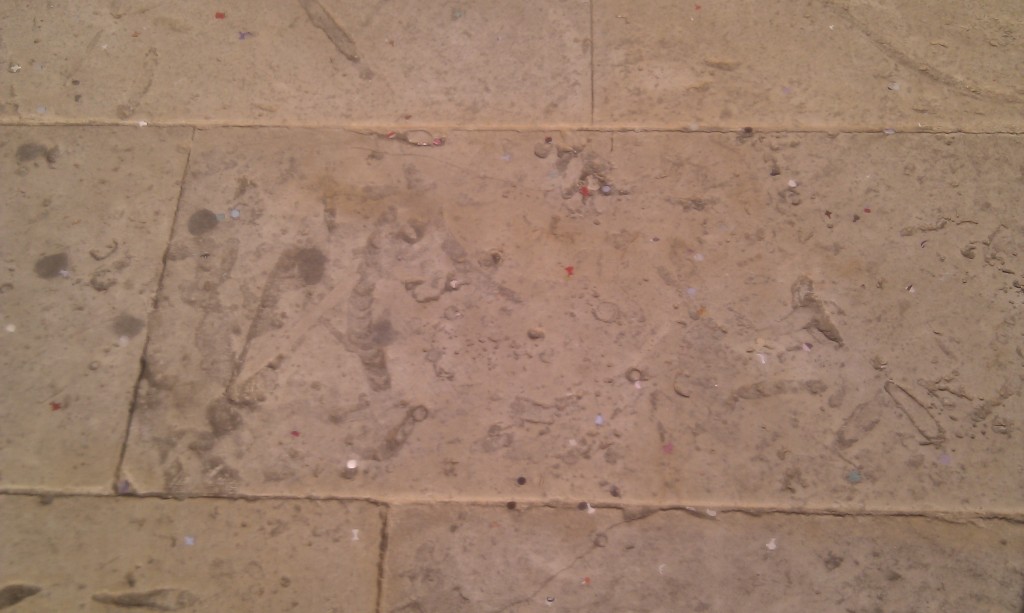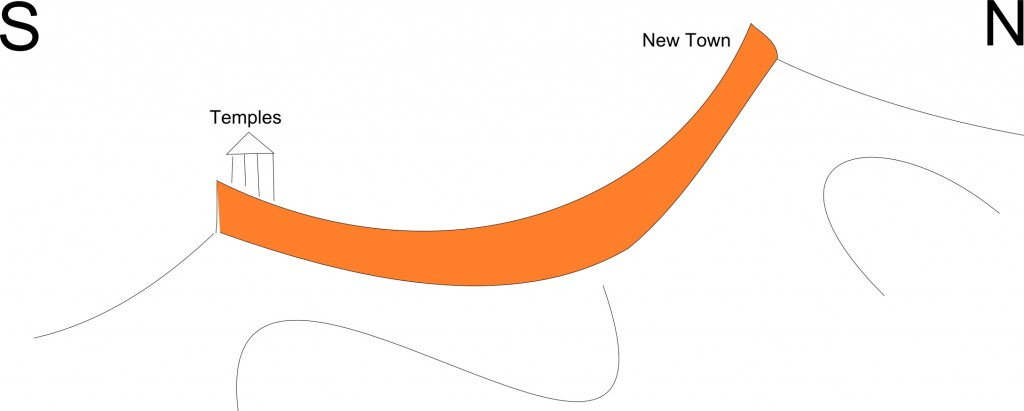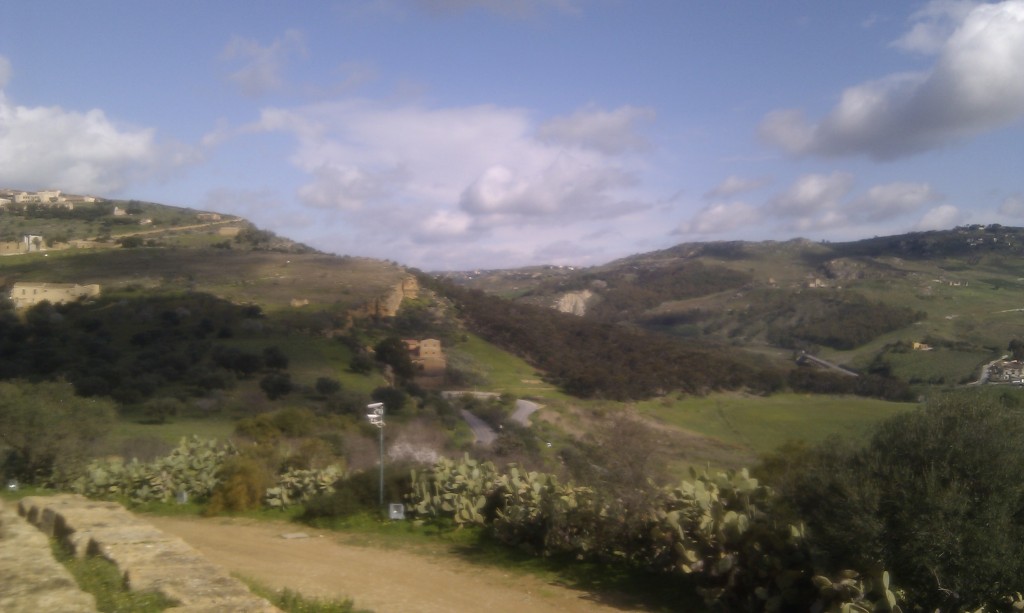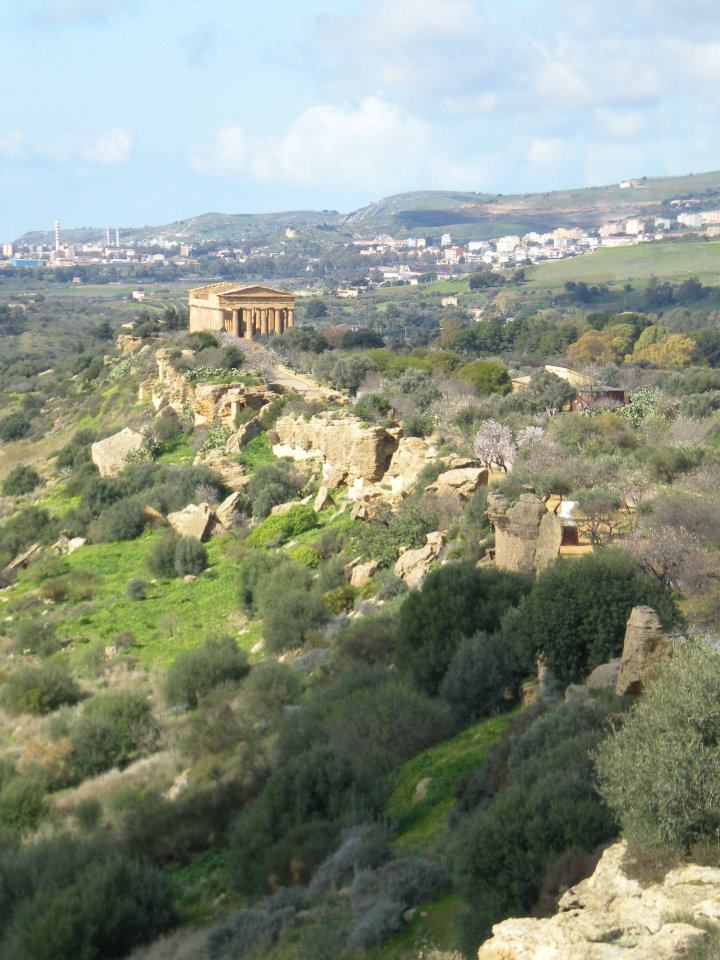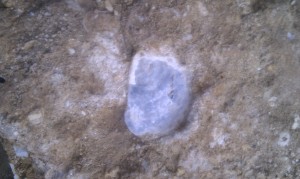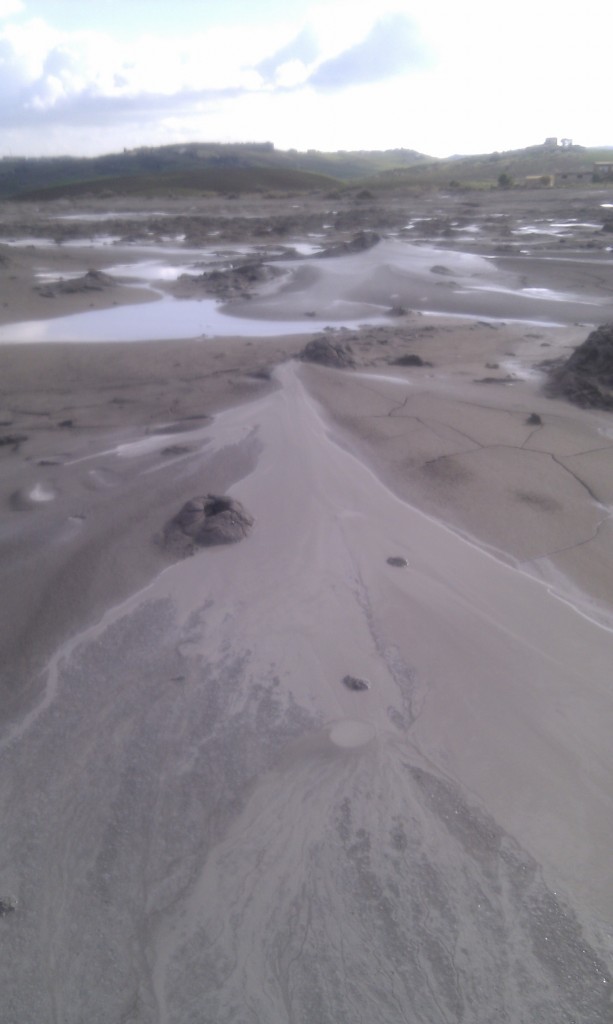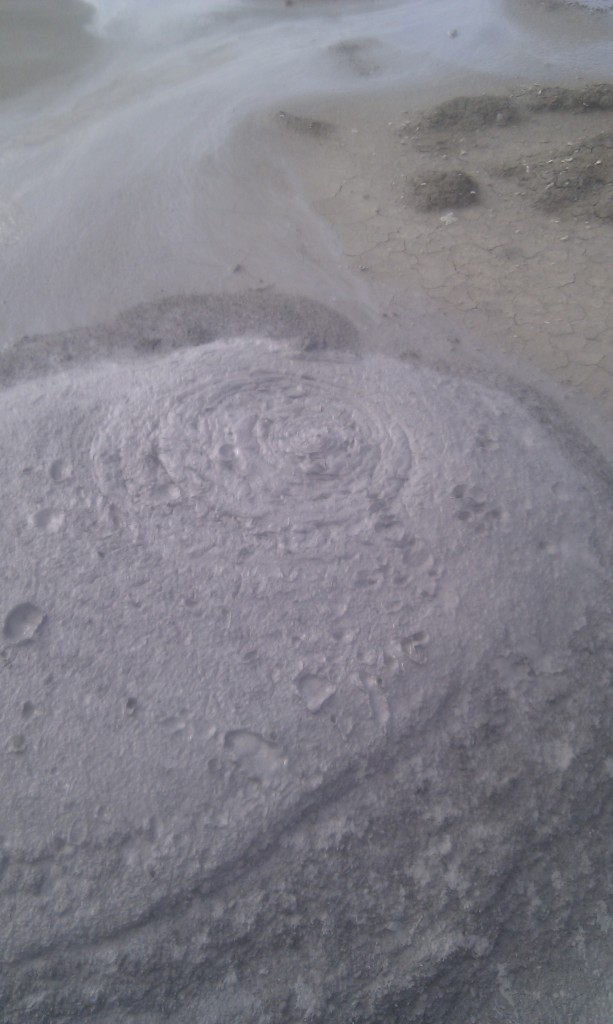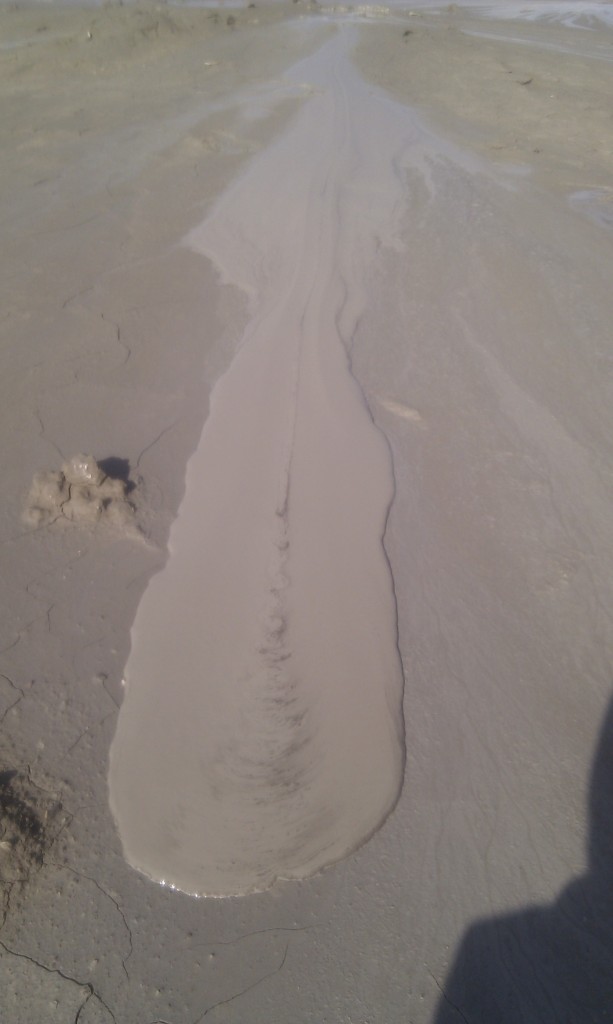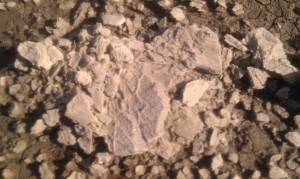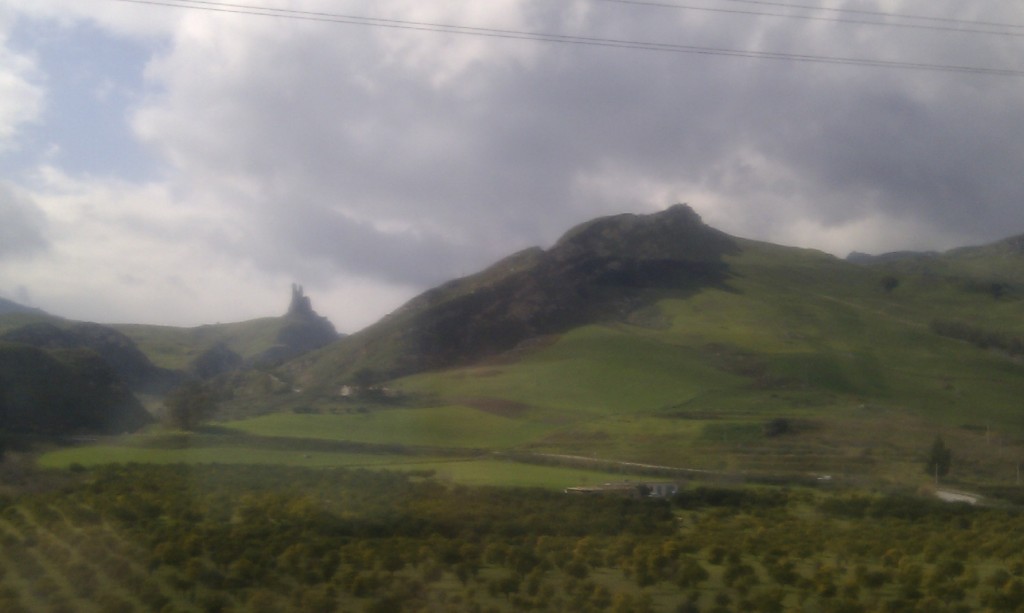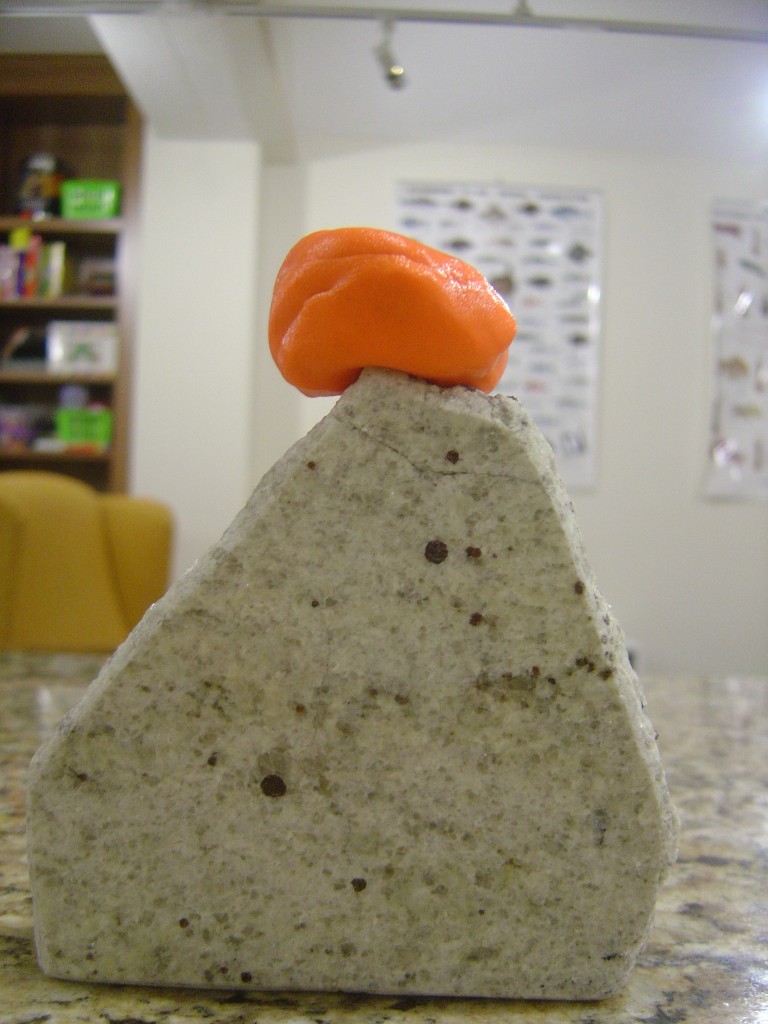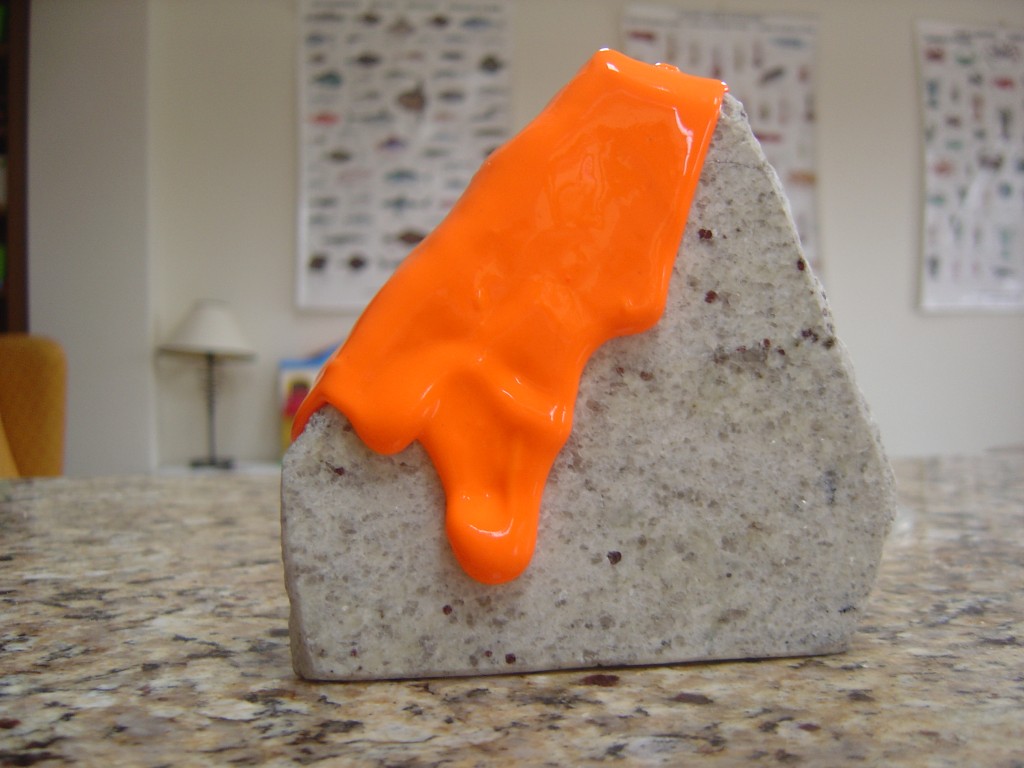 In early February I went on a trip to Sicily with friends. I had originally planned to visit Etna, but I was travelling with non-geologists and the cost and discomfort of going up there in the winter put me off. I was therefore a little narked that Etna decided to erupt a few days before I was due to fly off. The fantastic pictures from @EtnaWalk and @EtnaBoris made me feel I was missing out.
In early February I went on a trip to Sicily with friends. I had originally planned to visit Etna, but I was travelling with non-geologists and the cost and discomfort of going up there in the winter put me off. I was therefore a little narked that Etna decided to erupt a few days before I was due to fly off. The fantastic pictures from @EtnaWalk and @EtnaBoris made me feel I was missing out.
By the time we flew into Catania Etna had (just) stopped erupting. It was also totally invisible beneath cloud. This made me feel a bit better about my decision to focus the holiday around seafood and leisure rather than lava. From Catania, at the foot of Etna, we made our way to Siracusa, which Archimedes called home. The drive south revealed a landscape characteristic of a stable platform, with lots of flat layered sediments creating a ‘trap topography’ with flat-topped hills with long steps between them. The south-eastern corner of Sicily is in fact part of the African plate and so is as yet untouched by the exciting things that have happened to most of the rest of the Mediterranean.
Siracusa is a nice place (well at least the old quarter of Ortygia is). Local buildings make use of basalt and limestone together, often with basalt forming parts that need to be hard wearing, such as steps.
The square in front of the cathedral in Ortygia has been recently paved with slabs rich in trace fossils. I won’t hazard a guess as to the names but you can tell these critters were having lots of fun in the (limey) mud.
Having forgotten about Etna, a surprise on our first morning was that the breakfast room of the hotel had a nice distant view of it. Note how the modern cathedral echoes the shape of the volcano, but focus on the white triangle in the centre of the picture.
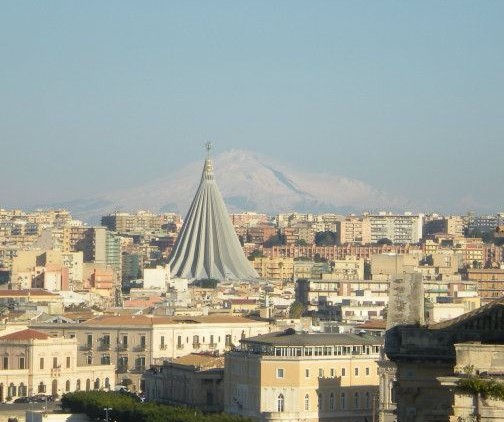 The black streak on its right hand side is the days-old lava flow, standing out against the snow. It was an awesome sight which together with top-quality espresso got the day off to a great start.
The black streak on its right hand side is the days-old lava flow, standing out against the snow. It was an awesome sight which together with top-quality espresso got the day off to a great start.
After Siracusa we drove west along the South coast to Agrigento. This journey took us off the stable platform and into an accretionary wedge. This is a package of sediments all stacked up on top of a major thrust. In this case, the rest of Sicily was being thrust over the eastern part along what is in effect a plate boundary.
The reason tourists visit Agrigento is for the ancient Greek temples. These are in some ways better than anything you find in Greece, I am told. They are made of a rather handsome orange calcarenite (limey sandstone) which underlies the town. This layer makes a rather nice structure and is, I infer, one of the reasons the ancient Greeks sited their colony here.
Let me explain. The Greek temples sit on the top of an escarpment, which makes them highly visible from the sea. There is a hill above the temples topped by the same escarpment, only pointing the other way. There is a dip slope in the middle making a nice flat area. Agrigento therefore is a nice flat area surrounded by cliffs on three sides. This must have made it easier to defend from attack.
This structure is due to the sandstone being gently folded. Here is a cross-section sketch-cartoon with the sandstone shaded in something close to its natural colour.
Note that I’ve made a gesture towards showing more intensely folded sediments below. The calcarenites are thrust-top sediments meaning they were deposited onto the already deforming thrust wedge. This is why they are only gently folded, whereas the other rocks in Sicily have enjoyed a lot more structural hijinks. There is of course an unconformity between the two sets of rocks.
This photo is looking North down the line of the cross-section, standing by the temples. On the left you see the dip-slope climbing up the hill with a glimpse of the orange escarpment just before it forms the left-hand skyline. The right-hand side shows the paler limestones and evaporites that lie unconformably below.
Here’s a view looking west along the southern escarpment. It gives some sense of why these temples were built where they were.
We ate a lot of seafood in Sicily, as we were always staying on the coast. I never saw oysters on the menu though, but to make up for it, there were fossil oysters available in the calcarenite (scallops too).
We managed to get a trip to one Geological feature, as an alternative to Etna. Appropriately enough we visited Etna’s other volcanoes.
The Macalube nature reserve is a big patch of mud. I’ll try that again, with my marketing hat on. Macalube is outstanding location of international renown where you too can experience the thrill of standing on top of an erupting volcano at no personal risk (except to your shoes).
This is an area of mud volcanoes, which in many ways are completely unlikely proper volcanoes.
Consider the sediments in the accretionary wedge. They are under pressure, they are being lithified, with mud turning to mudstone, driving off water. Also organic matter is producing methane gas plus there are extensive evaporite deposits in these sediments, a product of the Messinian crisis when the Mediterranean completely dried up. All these things going on underground act to create big masses of mud that start to flow up towards the surface. When they run out of rock to rise through, they form mud volcanoes.
Macalube is nowhere as dramatic as Lusi in Indonesia that erupted last year, but it has its charms. It was quiet when we were there, with just a few ‘bloops’ every minute or so which reminded me of my granddad’s home-brewing kit.
When looking at mud volcanoes you can’t help but compare them to the real thing. The underlying mechanism is totally different, but the shapes are often very similar. The viscosity of the mud varies, which gives effects like different viscosity magmas. Here is some viscous mud which spits out big lumps now and then. It is sort of kinda like Mount St. Helens (note the big splats).
Whereas here is some runny mud, making a discrete ‘flow’. This area was a flatter shield-like area, more reminiscent of the Hawaiian volcanoes.
There were some bits of fibrous minerals in the mud, probably broken veins of gypsum; my only brush with the Messinian.
On our penultimate day we took the train across the island to Palermo on the north coast. Through the window there were many examples of folded sediments, such as this one. You’ll notice the layers dipping to left first, but note that the pointy crags a third along from the left are vertical.
Volcanoes, limestone, structure and good food. Sicily has a lot going for it.

